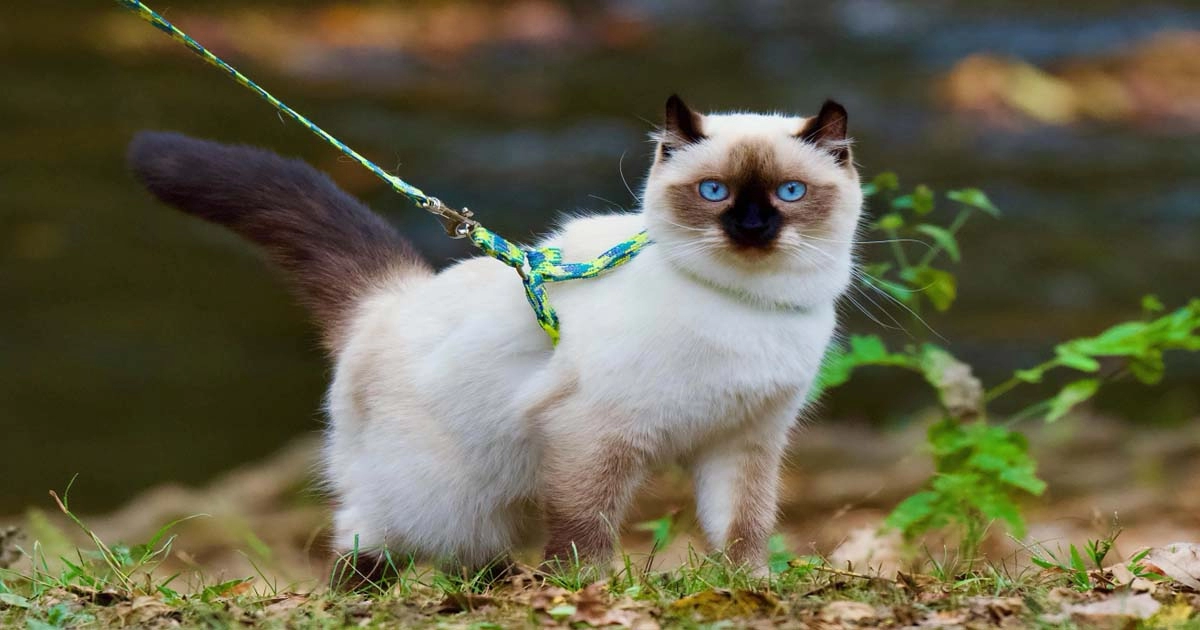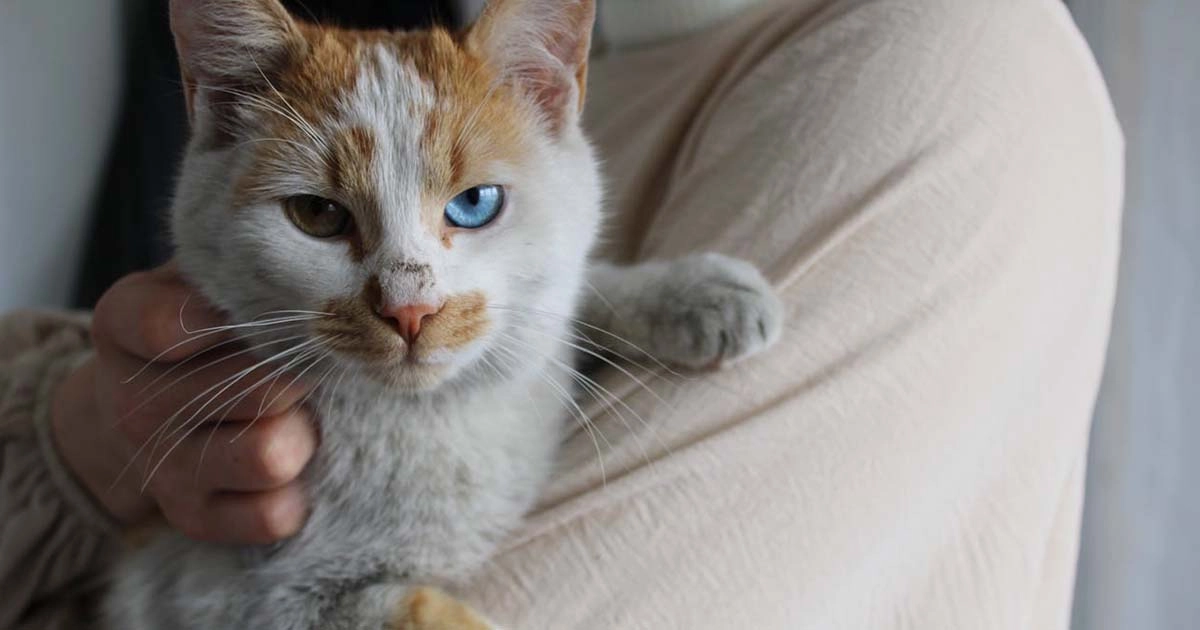How to walk your cat on a leash (7 easy steps);

Cat
29/05/2024

Getting your furry feline to enjoy a walk on a leash with you is no easy task. However, with patience and love your cat will be walking on a leash in no time! Learn how to walk your cat on a leash with these 7 easy and simple steps.
While you begin this process, remember to reward and praise your kitty – it will go a long way! Be mindful of your cat’s personality and even cat breed: are they adventurous or timid? Do they shy easily or are they curious?
Not all cats will adapt easily to wearing a harness or walking on a leash. This is why we recommend training your cat to wear a harness and walk on a leash from a young age. Kittens will be naturally more accepting of this new experience. However, with patience (and treats!) your adult cat can learn how to walk on a leash, too.
1. Buy a comfortable cat harness and leash
First and foremost, invest in a comfortable harness especially fitted for cats or kittens. The first harness we bought for Yoda was slightly too big, but it worked out perfectly. Why? Your kitten will grow rapidly over the course of a few weeks, so investing in a slightly larger harness will allow them to grow into it as they get older. Buying a harness that is a little bigger will also allow them to not feel too tight while they practice getting used to the feel of the harness for the first few weeks.
2. Let your cat get used to the feeling and idea of wearing a harness
Next, once you have the right equipment, introduce the harness and leash gently to your cat. Leave it next to their food, cat stand, or somewhere that makes them happy so they can begin associating it with contentment. Give your cat a treat (or two) when they sniff the harness so they know the harness means a good thing! If your cat is used to being held, great! If not, practice for a few days by holding him/her on your lap as if you were going to put on the harness. Reward him/her for good behavior by offering a treat immediately afterward.
3. Reward good behavior with treats and positive cues
Associating praise and treats with the harness will help your cat get used to the leash faster. Repeat this exercise until your cat is comfortable with the harness and is able to walk around comfortably (in the house) for an extended period of time. It’s natural for your cat to resist the harness once you successfully buckle it on. It will feel alien to them and so they will most likely lay down and try to take it off.
Distract your cat from doing this at all costs. Offer them treats, throw a jingly ball, or dangle a string in front of them. This will help your cat get used to the fact that he/she is wearing something. Leave your cat to walk around on its own with the harness still on. Keep a close eye though, if they try to take it off repeat your distracting tactics.
After 15 minutes of wear (more or less, depends on your kitty), gently take your cat into your lap and offer him/her a treat and don’t forget to praise and caress! Then gently unbuckle the harness and remove it slowly. Once successfully removed offer another treat and praise again.
4. Let your cat wear the harness and leash inside your home until they’re ready to go outside
The next big step is to have your cat wear the harness and leash inside your home for longer periods of time without even noticing it. Once they can do that – that’s a great sign!
At first, your cat might try to play with the harness or leash. This is tricky because if they see the leash, they will try and play with it and attack it. Offer distractions to take their mind off wearing the harness or playing with the leash. What if my cat keeps playing with the leash?
Let your cat chase a long string that you are circling around yourself to distract from the leash. Once your kitty has learned the leash isn’t a toy, practice tugging gently and stopping the leash while walking between the rooms of your home.
5. Getting out the front door: Start with very small trips!
If your cat comfortably wears their cat harness and leash inside the home, then you can begin training to go outdoors. Cats who are already skittish of going outside will need more time to adjust. The world’s a big, curious place! If your cat has never been outside before, they’ll take their time, look around and sniff about.
For the first months and year of training our cat to walk on a leash, we chose to stay very close to home. We let Yoda wander around the yard and sniff the plants, the trees, and everything was at his pace! Which leads me to...
6. Follow your cat’s lead and pace at all times
Our best advice for training your cat to walk on a leash is to not imagine what it’s like to walk a dog. Walking a cat is completely different! Focus on your cat’s pace and rhythm, steer them away from trouble, and always proceed gently! Here are some ideas for first trips outside the home on a harness and leash:
- Your backyard or garden
- Around the block or a quiet neighborhood
- A very small, quiet and nearby local park
7. Explore bigger parks and trails with your cat on a leash!
Finally, introduce your kitty to public parks and trails! Pick a quiet grassy area with interesting shrubs, flowers, or small trees around. Doing this will entice your kitty to explore, which makes walking your cat on a leash so much simpler!
In the first stages, never let your kitty wander too far from you. A loud car or barking dog could frighten them easily and they may bolt. Depending on how your cat responds to the leash and the outdoors, continue extending the amount of time outside, eventually reducing the number of treats to only one or two (for start and finish).











